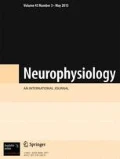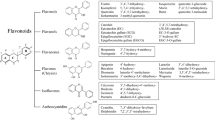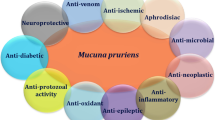Parkinson’s disease (PD) is a heterogeneous neurodegenerative disorder, characterized by depletion of dopamine resulted from the death of dopaminergic neurons in the substantia nigra. The prevalence and incidence of PD is influenced by several factors, such as age, gender, ethnicity, genetic susceptibilities, and environmental exposures. Coconut oil (Coc) is a rich source of medium-chain triglycerides that are easily metabolized and give rise to ketones. Also, it contains antioxidants, such as vitamin E and polyphenolic compounds. It has been documented that Coc possesses significant pharmacological activities against obesity, insulin resistance, and neurodegenerative disorders, like Alzheimer’s disease and multiple sclerosis. Therefore, the purpose of this review was to describe the use of coconut oil in preventing PD and slowing its progression. Also, we tried to identify possible mechanisms by which Coc may exert its beneficial role in PD. The available literature related to Coc PD effects , in both animal models and clinical trials was screened. This review showed that Coc can be supplemented to decrease the risk of PD.
Similar content being viewed by others
References
S. Gandhi and A. Y. Abarmov, “Mechanism of oxidative stress in neurodegeneration,” Oxid. Med. Cell. Longev., 2012; Article ID 428010, 11 pages (2012).
L. M. de Lau and M. M. Breteler, “Epidemiology of Parkinson’s disease,” Lancet Neurol., 5, No. 6, 525–535 (2006).
Z. S. Agim and J. R. Cannon, “Dietary factors in the etiology of Parkinson’s disease,” Biomed. Res. Int., 2015, 672838 (2015).
L. M. Shulman, R. L. Taback, J. Bean, et al., “Comorbity of the nonmotor symptoms of Parkinson’s disease,” Mov. Disord., 16, No. 3, 507-510 (2001).
G. DeMaagd and A. Philip, “Parkinson’s disease and its management: Part 1: Disease entity, risk factors, pathophysiology, clinical presentation, and diagnosis,” P. T., 40, No. 8, 504–532 (2015).
O. B. Tysnes and A. Storstein, “Epidemiology of Parkinson’s disease,” J. Neural. Transm. (Vienna), 124, No. 8, 901–905 (2017).
K. Sethi, “Levodopa unresponsive symptoms in Parkinson disease,” Mov. Disord., 23, Suppl. 3, 521–533 (2008).
S. E. Seidl, J. A. Santiago, H. Bilyk, and J. A. Potashkin., “The emerging role of nutrition in Parkinson’s disease,” Front. Aging Neurosci., 6, No. 36 (2014).
M. Healy-Stoffel and B. Levant, “N-3 (Omega-3) fatty acids: effects on brain dopamine systems and potential role in the etiology and treatment of neuropsychiatric disorders,” CNS Neurol. Disord. Drug. Targets, 17, No. 3, 216–232 (2018).
T. Schirinzi, G. Martella, P. Imbriani, et al., “Dietary vitamin E as a protective factor for Parkinson’s disease: clinical and experimental evidence,” Front. Neurol., 2019, No. 10, 148 (2019).
W. M. Fernando, I. J. Martins, K. G. Goozee, et al., “The role of dietary coconut for the prevention and treatment of Alzheimer’s disease: potential mechanisms of action,” Br. J. Nutr., 114, No. 1, 1–14 (2015).
A. Weerasekera, D. M. Sima, T. Dresselaers, et al., “Non-invasive assessment of disease progression and neuroprotective effects of dietary coconut oil supplementation in the ALS SOD1G93A mouse model: A 1H-magnetic resonance spectroscopic study,” Neuroimage Clin., 20, 1092–1105 (2018).
G. A. G. Krishna, G. Raj, A. S. Bhatnagar, et al., “Coconut oil: Chemistry, production and its applications - A Review,” Ind. Coconut J., 73, 15–27 (2010).
D. J. Moore, A. B. West, V. L. Dawson, and T. M. Dawson., “Molecular pathophysiology of Parkinson’s disease,” Annu. Rev. Neurosci., 28, 57–87 (2005).
N. Ball, W. P. Teo, S. Chandra, and J. Chapman, “Parkinson’s disease and the environment,” Front. Neurol., 10, No. 218 (2019).
S. M. Fleming, “Mechanisms of gene-environment interactions in Parkinson’s disease,” Curr. Environ. Health. Rep., 4, No. 2, 192–199 (2017).
L. Puspita, S. Y. Chung, and J.-W. Shim, “Oxidative stress and cellular pathologies in Parkinson’s disease,” Mol. Brain, 10, No. 1, 53 (2017).
J. Blesa, I. Trigo-Damas, A. Quiroga-Varela, et al., “Oxidative stress and Parkinson’s disease,” Front. Neuroanat., 9, 91 (2015).
C. W. Olanow, P. Jenner, and D. Brooks, “Dopamine agonists and neuroprotection in Parkinson’s disease,” Ann. Neurol., 44, 3 Suppl. 1, 167–174 (1998).
A. Gaba, “Recent studies on nutrition and Parkinson’s disease prevention: A systematic review,” Open J. Prevent. Med., 5, No. 5, 197–205 (2015).
Muralidhara, S. V. Yenisetti, and S. C. Yenisetti, “Current understanding on the beneficial role of nutrition in Parkinson’s disease – an overview,” J. Aging Sci., 5, 177 (2017).
H. Suganuma, T. Hirano, Y. Arimoto, and T. Inakuma, “Effect of tomato intake on striatal monoamine level in a mouse model of experimental Parkinson’s disease,” J. Nutr. Sci. Vitaminol. (Tokyo), 48, No. 3, 251–254 (2002).
M. M. Essa, R. K. Vijayan, G. Castellano-Gonzalez, et al., “Neuroprotective effect of natural products against Alzheimer’s disease,” Neurochem. Res., 37, No. 9, 1829–1842 (2012).
J. Peter, P. J. Houghton, and M. J. Howes, “Natural products and derivatives affecting neurotransmission relevant to Alzheimer’s and Parkinson’s disease, Rev. Neurosignals, 14, 6–22 (2005).
J. P. E. Spencer, “The impact of flavonoids on memory: physiological and molecular considerations,” Chem. Soc. Rev., 38, No. 4, 1152–1161 (2009).
P. Maher, “The potential of flavonoids for the treatment of neurodegenerative diseases,” Int. J. Mol. Sci., 20, No. 12, 3056 (2019).
K. Vafeiadou, D. Vauzour, J. P. E. Spencer, “Neuroinflammation and its modulation by flavonoids,” Endocrin. Metab. Immun. Disord. Drug. Targets, 7, No. 3, 211–224 (2007).
M. Ayaz, A. Sadiq, M. Junaid, et al., “Flavonoids as prospective neuroprotectants and their therapeutic propensity in aging associated neurological disorders,” Front. Aging Neurosci., https://doi.org/10.3389/fnagi.2019.00155,(2019)
A. H. V. Schapira and C. W. Olanow, “Neuroprotection in Parkinson disease: mysteries, myths, and misconceptions,” JAMA, 291, No. 3, 358–364 (2004).
G. Hussain, L. Zhang, A. Rasul, et al., “Role of plantderived flavonoids and their mechanism in attenuation of Alzheimer’s and Parkinson’s diseases: an update of recent data,” Molecules, 23, No. 4, 814. (2018).
J. Orsavova, L. Misurcova, J. V. Ambrozova, et al., “Fatty acids composition of vegetable oils and its contribution to dietary energy intake and dependence of cardiovascular mortality on dietary intake of fatty acids,” Int. J. Mol. Sci., 16, No. 6, 12871–12890 (2015).
A. M. Marina, Y. B. Man, S. A. H. Nazimah, and I. Amin, “Antioxidant capacity and phenolic acids of virgin coconut oil,” Int. J. Food Sci. Nutr., 60, Suppl 2, 114–123 (2009).
C. J. Wyatt, S. P. Carballido, and R. O. Mendez, “α- and γ-Tocopherol content of selected foods in the Mexican diet: effect of cooking losses,” J. Agric. Food Chem., 46, No. 11, 4657–4661 (1998).
M. DebMandal and S. Mandal, “Coconut (Cocos nucifera L.: Arecaceae) in health promotion and disease prevention,” Asian. Pac. J. Trop. Med., 4, No. 3, 241– 247 (2011).
M. V. Liberato, A. S. Nascimento, S. D. Ayers, et al., “Medium chain fatty acids are selective peroxisome proliferator activated receptor (PPAR) γ activators and pan-PPAR partial agonists,” PLoS One, 7, No. 5, e36297 (2012).
L. K. Mischley, R. C. Lau, and R. D. Bennett, “Role of diet and nutritional supplements in Parkinson’s disease progression,” Oxid. Med. Cell Longev., 2017, Article ID 6405278, 9 pages (2017).
J. Y. Shin, R. T. Pohlig, and B. Habermann, “Use of complementary health approaches in individuals with Parkinson’s disease,” J. Gerontol. Nurs., 43, No. 2, 46–54 (2017).
L. M. Sayre, M. A. Smith, and G. Perry, “Chemistry and biochemistry of oxidative stress in neurodegenerative disease,” Curr. Med. Chem., 8, No. 7, 721–738 (2001).
S. Przedborski, K. Tieu, C. Perier, Miquel Vila, “MPTP as a mitochondrial neurotoxic model of Parkinson’s disease,” J. Bioenerg. Biomembr., 36, No. 4, 375–379 (2004).
A. H. Schapira, V. M. Mann, J. M. Cooper, et al., “Anatomic and disease specificity of NADH CoQ1 reductase (complex I) deficiency in Parkinson’s disease,” J. Neurochem., 55, No. 6, 2142–2145 (1990).
V. S. Burchell, S. Gandhi, E. Deas, et al., “Targeting mitochondrial dysfunction in neurodegenerative disease: Part I,” Exp. Opin. Ther. Targets., 14, No. 4, 369–385 (2010).
L. Doty, “Coconut oil for Alzheimer’s disease?” Clin. Pract., 1, No. 2, 12–17 (2012).
M. F. McCarty, J. J. DiNicolantonio, and J. H. O’Keefe, “Ketosis may promote brain macroautophagy by activating Sirt1 and hypoxia-inducible factor-1,” Med. Hypotheses, 85, No. 5, 631–639 (2015).
B. C. Perng, M. Chen, J. C. Perng, and P Jambazian., “A keto-mediet approach with coconut substitution and exercise may delay the onset of Alzheimer’s disease among middle-aged,” J. Prev. Alzheimers Dis., 4, No. 1, 51–57 (2017).
C. Vandenberghe, V. St-Pierre, T. Pierotti, et al., “Tricaprylin alone increases plasma ketone response more than coconut oil or other medium-chain triglycerides: an acute crossover study in healthy adults,” Current Dev. Nutr., 1, No. 4, e000257 (2017).
A. A. M. Morris, “Cerebral ketone body metabolism,” J. Inherit. Metab. Dis., 28, No. 2, 109–121 (2005).
K. Tieu, C. Perier, and C. Caspersen, et al., “Anatomic and disease specificity of NADH CoQ1 reductase (complex I) deficiency in Parkinson’s disease,” J. Clin. Invest., 112, No. 6, 892–901 (2003).
K. J. Bough, J. Wetherington, B. Hassel, et al., “Mitochondrial biogenesis in the anticonvulsant mechanism of the ketogenic diet,” Ann. Neurol., 60, No. 2, 223–235 (2006).
T. B. Vanitallie, C. Nonas, A. Di Rocco, et al., “Treatment of Parkinson’s disease with diet-induced hyperketonemia: A feasibility study,” Neurology, 64, 728–730 (2005).
M. Rahman, S. Muhammad, M. A. Khan, et al., “The β-hydroxybutyrate receptor HCA2 activates a neuroprotective subset of macrophages,” Nat. Commun., 5, 3944 (2014).
E. C. Graff, H. Fang, D. Wanders, and Robert L Judd, “Anti-inflammatory effects of the hydroxycarboxylic acid receptor 2,” Metabolism, 65, No. 2, 102–113 (2016).
F. Coppedè, “The potential of epigenetic therapies in neurodegenerative diseases,” Front. Genet., 5, 220 (2014).
X. Wu, P. S. Chen, S. Dallas, et al., “Histone deacetylase inhibitors up-regulate astrocyte GDNF and BDNF gene transcription and protect dopaminergic neurons,” Int. J. Neuropsychopharmacol., 11, No. 8, 1123–1134 (2008).
W. Zhou, K. Bercury, J. Cummiskey, et al., “Phenylbutyrate up-regulates the DJ-1 protein and protects neurons in cell culture and in animal models of Parkinson disease,” J. Biol. Chem., 286, No. 17, 14941– 14951 (2011).
M. Maalouf, J. M. Rho, and M. P. Mattson, “The neuroprotective properties of calorie restriction, the ketogenic diet, and ketone bodies,” Brain Res. Rev., 59, No. 2, 293–315 (2008).
A. Yoritaka, N. Hattori, K. Uchida, et al., “Immunohistochemical detection of 4-hydroxynonenal protein adducts in Parkinson disease,” Proc. Natl. Acad. Sci. USA, 93, No. 7, 2696–2701 (1996).
J. Zhang, G. Perry, M. A. Smith, et al., “Parkinson’s disease is associated with oxidative damage to cytoplasmic DNA and RNA in substantia nigra neurons,” Am. J. Pathol., 154, No. 5, 1423–1429 (1999).
Z. I. Alam, S. E. Daniel, A. J. Lees, et al., “Generalized increase in protein carbonyls in the brain in Parkinson’s but not incidental Lewy body disease,” J. Neurochem., 69, No. 3, 1326–1329 (1997).
E. Floor and M. G.Wetzel, “Increased protein oxidation in human substantia nigra pars compacta in comparison with basal ganglia and prefrontal cortex measured with an improved dinitrophenylhydrazine assay,” J. Neurochem. 70, No. 1, 268–275 (1998).
J. Sian-Hülsmann, S. Mandel, and M. B. H. Youdim, P. Riederer, “The relevance of iron in the pathogenesis of Parkinson’s disease,” J. Neurochem., 118, No. 6, 939– 957 (2011).
S. Bharath, M. Hsu, D. Kaur, et al., “Glutathione, iron and Parkinson’s disease,” Biochem. Pharmacol., 64, Nos. 5-6, 1037–1048 (2002).
W. Linert, E. Herlinger, R. F. Jameson, et al., “Dopamine, 6-hydroxydopamine, iron, and dioxygen – their mutual interactions and possible implication in the development of Parkinson’s disease,” Biochim. Biophys. Acta., 1316, No. 3, 160–168 (1996).
R. Filograna, M. Beltramini, L. Bubacco, M. Bisaglia, “Anti-oxidants in Parkinson’s disease therapy: a critical point of view,” Curr. Neuropharmacol., 14, No. 3, 260– 271 (2016).
F. Yang, A. Wolk, N. Håkansson, et al., “Dietary antioxidants and risk of Parkinson’s disease in two population- based cohorts,” Mov. Disord., 32, No. 11, 1631– 1636 (2017).
M. Bourque, D. E. Dluzen, and T. Di Paolo, “Neuroprotective actions of sex steroids in Parkinson’s disease,” Front. Neuroendocrinol., 30, No. 2, 142–157 (2009).
K. T. Lu, M. C. Ko, B. Y. Chen, et al., “Neuroprotective effects of resveratrol on MPTP-induced neuron loss mediated by free radical scavenging,” J. Agric. Food Chem., 56, No. 16, 6910–6913 (2008).
I. Banjari, T. Marček, S. Tomić, and V. Y. Waisundara, “Forestalling the epidemics of parkinson’s disease through plant-based remedies,” Front. Nutr., 5 , 95 (2018).
M. L. Prins, “Cerebral metabolic adaptation and ketone metabolism after brain injury,” J. Cerebr. Blood Flow Metab., 28, No. 1, 1–16 (2008).
L. B. Achanta and C. D. Rae, “β-Hydroxybutyrate in the brain: one molecule, multiple mechanisms,” Neurochem. Res., 42, No. 1, 35–49 (2017).
J. B. Milder, L. P. Liang, and M. Patel, “Acute oxidative stress and systemic Nrf2 activation by the ketogenic diet,” Neurobiol. Dis., 40, No. 1, 238–244 (2010).
J. C. Newman and E. Verdin, “Ketone bodies as signaling metabolites,” Trends Endocrinol. Metab., 25, No. 1, 42–52 (2014).
Y. Yang and A. A. Sauve, “NAD(+) metabolism: Bioenergetics, signaling and manipulation for therapy,” Biochim. Biophys Acta., 1864, No. 12, 1787–1800 (2016).
Z. B. Andrews, S. Diano, and T. L. Horvath, “Mitochondrial uncoupling proteins in the CNS: in support of function and survival,” Nat. Rev. Neurosci., 6, No. 11, 829–840 (2005).
Y. Akaneya, M. Takahashi, H. Hatanaka, “Involvement of free radicals in MPP+ neurotoxicity against rat dopaminergic neurons in culture,” Neurosci. Lett., 193, No. 1, 53–56 (1995).
D. T. Dexter, D. J. Brooks, A. E. Harding, et al., “Nigrostriatal function in vitamin E deficiency: clinical, experimental, and positron emission tomographic studies,” Ann. Neurol., 35, No. 3, 298–303 (1994).
R. Ricciarelli, F. Argellati, M. A. Pronzato, and C. Domenicotti, “Vitamin E and neurodegenerative diseases,” Mol. Aspects Med., 28, Nos. 5–6, 591–606 (2007).
K. G. Coupland, G. D. Mellick, P. A. Silburn, et al., “DNA methylation of the MAPT gene in Parkinson’s disease cohorts and modulation by vitamin E in vitro,” Mov. Disord., 29, No. 13, 1606–1614 (2014).
C. A. Weber and M. E. Ernst, “Antioxidants, supplements, and Parkinson’s disease,” Ann. Pharmacother., 40, No. 5, 935–938 (2006).
M. Etminan, S. S. Gill, and A. Samii, “Intake of vitamin E, vitamin C, and carotenoids and the risk of Parkinson’s disease: a meta-analysis,” Lancet Neurol., 4, No. 6, 362– 365 (2005).
S. M. Zhang, M. A. Hernán, H. Chen, et al., “Intakes of vitamins E and C, carotenoids, vitamin supplements, and PD risk,” Neurology, 59, No. 8, 1161–1169 (2002).
C. W. Olanow, “Dietary vitamin E and Parkinson’s disease: something to chew on, Lancet Neurol., 2, No. 2, 74 (2003).
W. L. Scheider, L. A. Hershey, J. E. Vena, et al., “Dietary antioxidants and other dietary factors in the etiology of Parkinson’s disease,” Mov. Disord., 12, No. 2, 190–196 (1997).
Author information
Authors and Affiliations
Corresponding authors
Rights and permissions
About this article
Cite this article
Ibrahim, K.S., El-Sayed, E.M. Beneficial Effects of Coconut Oil in Treatment of Parkinson’s Disease. Neurophysiology 52, 169–175 (2020). https://doi.org/10.1007/s11062-020-09866-1
Received:
Published:
Issue Date:
DOI: https://doi.org/10.1007/s11062-020-09866-1




